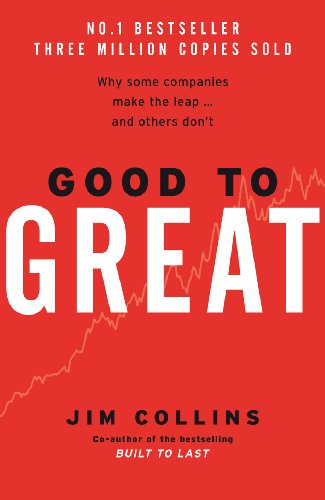“Good to Great” by Jim Collins
Jim Collins’ “Good to Great” stands as a modern classic in the business literature genre, offering a comprehensive analysis of what transforms a good company into a great one. Through meticulous research spanning five years, Collins and his team studied various companies that made the leap to great results and sustained those results for at least fifteen years. The book presents a well-defined framework that encompasses the practices and principles these companies followed.
A key tenet of “Good to Great” is the concept of ‘Level 5 Leadership’ – leaders who combine personal humility with professional will. Collins also introduces the idea of getting the right people ‘on the bus’ (and the wrong ones off), understanding that people are a company’s most valuable asset. The book further delves into the importance of confronting brutal facts, the principle of the Hedgehog Concept (simplifying a complex world into a single organising idea), and the culture of discipline.
The primary challenge for readers attempting to apply Collins’ principles is the transition from theory to practice. While the book offers a clear framework, adapting these principles to suit the unique context of different organisations can be complex. The transition requires not only strategic changes but also shifts in organisational culture and mindset.
Another hurdle is the long-term application of these principles. “Good to Great” is not about quick fixes or short-term gains; it’s about sustainable transformation, which requires patience, persistence, and consistency – qualities that can be challenging to maintain in today’s fast-paced business environment.
Additionally, the concept of Level 5 Leadership can be challenging to embody, especially in a business culture that often rewards ego and charisma over humility and disciplined will. Identifying and cultivating leaders who embody these traits is a significant challenge for many organisations.
In conclusion, “Good to Great” offers invaluable insights and practical advice for anyone looking to transform their organisation from mediocrity to excellence. However, the real challenge lies in the dedicated and persistent application of these principles over time, requiring a deep commitment to systemic change and leadership development.

